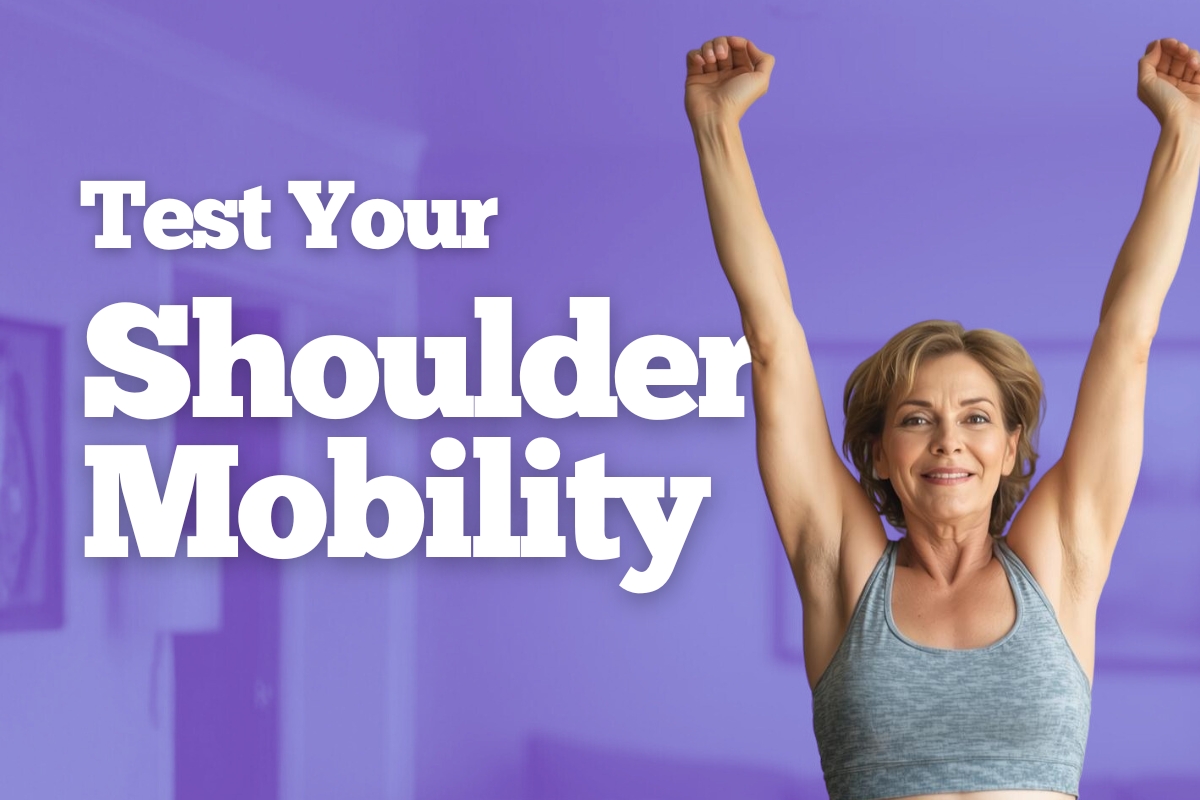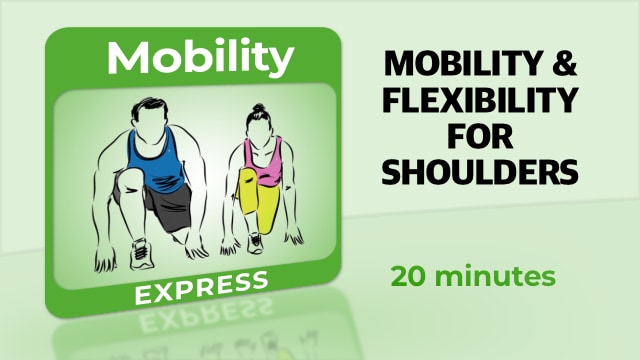
Have you noticed your shoulders feeling a bit stiffer lately? Maybe reaching for something on a high shelf isn’t quite as easy as it used to be? You’re not alone.
As we age, shoulder mobility tends to decline. But here’s the good news: it doesn’t have to.
Our shoulders are among the most mobile joints in the body, which is precisely why maintaining that range of motion is so important – especially for those of us over 50. When shoulder mobility decreases, everyday activities, from putting on a jacket to playing with grandchildren, become more challenging.
Read on to learn why this matters and what you can do about it.

Before we dive into improving shoulder mobility, let’s see where you stand. Start with a simple question:
“Can I lift my arms straight overhead without pain or arching my back?”
If you answered no, your shoulders may not be as healthy as they could be. You might already sense this through tightness or discomfort. (Important note: if you’re experiencing persistent or severe pain, please consult a physician or physical therapist.)
Detailed Test You Can Do At Home
You may want a partner to help with measurements:
To test your right shoulder –
- Stand and raise your left arm straight overhead
- Bend your left elbow and slide your palm down between your shoulder blades
- Reach behind with your right hand, back of hand against your lower back
- Slide both hands toward each other and try to touch fingertips
- Measure the distance between fingertips (then switch sides)





Understanding why our shoulders lose mobility helps us address the problem effectively.
As we age, several factors contribute: reduced collagen production makes tendons and ligaments less elastic, decreased synovial fluid affects joint lubrication, and years of repetitive movements or poor posture create muscular imbalances.
Women with larger chests may experience more upper back tension which can affect shoulder mobility.
Additionally, many of us spend considerable time in forward-leaning positions – whether at computers, driving, or looking at phones – which shortens chest muscles and weakens upper back muscles, pulling shoulders forward and limiting overhead range of motion.
Find Shoulder Mobility Classes in The Library
Ready to start improving your shoulder mobility? There are dozens of shoulder-focused sessions in the library to help you regain flexibility and strength. Simply use the search function, type in “shoulders,” and select “mobility” in the filter classes option to explore your choices.
To get you started, click here to watch a recent shoulder Mobility class that’s quickly becoming one of the most popular in the entire library.

Maintaining shoulder mobility isn’t just about comfort. It’s about preserving independence and quality of life.The ability to reach, lift, and move freely affects everything from getting dressed to gardening to embracing loved ones.
Start with the mobility test to establish your baseline, then incorporate these exercises into your daily routine.
Remember, improvement takes time, so be patient with yourself. Even small gains in shoulder mobility can make a significant difference in your daily activities.
If you experience pain during any of these exercises, modify the movement or consult a healthcare professional.
Your shoulders have served you well. Now it’s time to return the favour and give them the attention they deserve.
Want to know more about today’s topic? Do you have a suggestion for future posts? Leave a comment below – I’d love to hear from you!




0 Comments